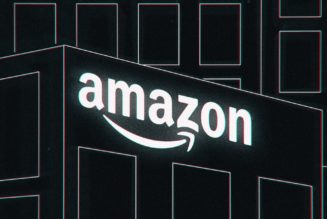Ikea has a new hub and app that could bring an end to its smart home usability issues. Ikea’s new Matter-ready Dirigera hub is now official after a month of leaks and is set to arrive alongside an entirely new Ikea Home Smart app. Unfortunately, both the hub and the new app aren’t scheduled to arrive until October.
That’s around the same time that Matter is supposed to launch, the new smart home standard that promises to make connected devices more interoperable, flexible, and private, no matter if you purchased them from the likes of Apple, Google, Amazon, Samsung, or any of the long list of companies already signed up.
Ahead of today’s announcement, Ikea’s Björn Block, business area manager, and Rebecca Töreman, business leader, showed me the new hub and app working together in a real-time demonstration. I saw several devices added — or “on-boarded” in Ikea-speak — without a hiccup. It certainly looked intuitive and reliable, which are two words that most people wouldn’t readily associate with the company’s current Trådfri gateway and Home Smart app.
:no_upscale()/cdn.vox-cdn.com/uploads/chorus_asset/file/19535788/bfarsace_191104_3811_0019.jpg)
“With Dirigera and the new app, our focus has been on strengthening and simplifying the on-boarding process when connecting new smart products to the smart home,” says Töreman. “The robustness of the experience is far more reliable, and I think that is something that we’re really proud of,” says Block. “It’s really something that works consistently over and over again.”
Before we dive into what the new hub can do, let’s start with its name: Dirigera. It means “conducting” in Swedish. Ikea’s also calling it a “hub” to differentiate it from the other white puck-shaped “gateway” it’s replacing.
Background
As Ikea tells it, the old Trådfri gateway that’s being replaced first debuted in 2014 when Ikea’s smart home ambitions were just a hobby and still rooted in the lighting division. “When we did the [Trådfri gateway], we only knew about lighting,” says Töreman. “Smart homes were new to us and many of our customers as well.” As such, Ikea made the decision to make “steering devices” like dimmers and switches the primary means for controlling Ikea’s smart bulbs. To add those lightbulbs to the Trådfri gateway, you had to add their steering device first, which was… odd.
:no_upscale()/cdn.vox-cdn.com/uploads/chorus_asset/file/19427445/bfarsace_191104_3811_0099.jpg)
Home Smart became a full-fledged strategic business area in the middle of 2019 under Block’s leadership, putting it alongside traditional business areas like Living Room, Bedroom, and Textiles in terms of importance to the company. Overnight, Block’s hobby was embraced by all of Ikea with a budget to match his ambitions.
It was the Home Smart business area that developed the new Dirigera hub, with insights the team has gained over the last eight years. That means it was built from the ground up to support the entire Ikea Home Smart ecosystem as it exists today — covering lighting, blinds, sound, and air purification — as well as what’s still to come. I was given a preview of this work at the end of 2019. Some of it already made its way into firmware releases for the Trådfri gateway and updates to the Home Smart app, which did help improve the overall user experience. But the body can only do so much if the bones are bad.
Block’s Home Smart team has been ramping up their in-house software expertise during the pandemic to match Ikea’s skill at making furnishings for “the many people.” (The company is very fond of repeating this phrase despite its questionable syntax, as it stems from the company’s motto: “to create a better everyday life for the many people.”)
“We have accelerated tremendously in the last two years. We have invested heavily in digital competence,” says Block, “hiring in every field from UX design and software development to data management and data privacy. The coworkers who are digital specialists have a lot to teach our life-at-home experts, and vice versa.”
With Ikea’s own Home Smart house now in order, Block thinks everything is in place to fully embrace Ikea 2.0. “The preconditions for mass adoption are here,” says Block. “So the mission that we are on with enabling the smart home for the many people, a smarter living for the many people, democratizing the smart home — we see that the opportunity is now. It’s a massive undertaking, of course, but also the greatest opportunity in order for Ikea to retain leadership in life at home.” Block believes that the trust Ikea has gained from customers buying its home furnishings will extend to sales of its smart home products.
Ikea will continue doing living rooms and kitchens and everything we expect from the company; its products are just going to get a lot smarter if Block and Töreman have their way. That means more integrations like speakers built into lamps, bookshelves, and wall art; wireless chargers built into desktop lamps and tabletops; air purifiers baked into side tables; and whatever else the home-obsessed nerds at Ikea can dream up.
“I might not even call it a smarter home, or a smart home, because it is really just home,” says Töreman. “It is the evolution of home.”
The Matter-ready Dirigera hub
The new Dirigera hub stands 2.7cm high with an 11.2cm diameter, making it about half as tall and ever so slightly wider than the old Trådfri gateway that measured 4.5cm high and 11cm across. The new hub is fitted with an Ethernet port and a USB-C jack for power.
Ikea’s calling the hub Matter-ready since it’s not officially certified yet. The first batch of official Matter-certified devices is expected before the end of the year, but it’s unclear if that includes the Dirigera hub or if its certification will push into 2023. When it is certified, the Dirigera hub and new Home Smart app will support all existing Ikea-sold Home Smart products as well as Matter-certified products from other companies. Those devices can then be controlled individually or mixed and matched in scenes within the app.
:no_upscale()/cdn.vox-cdn.com/uploads/chorus_asset/file/23585455/Dirigera_3b_highres.jpg)
Inside the Dirigera hub are radios for Wi-Fi, Zigbee, and Thread, allowing it to act as a Thread border router once everything is switched on. Thread is a primary protocol used by Matter, and a border router is a bridge between a Thread network and a Wi-Fi network, the other protocol used by Matter. At a date sometime after the October launch, the Dirigera hub will be updated with an option to connect to your home internet router over 2.4GHz / 5GHz Wi-Fi, in addition to an Ethernet cable, which will be the only option on day one.
“Matter is enabling us to create a more seamless experience for our customers and will strengthen the interoperability in smart homes and between smart products,” says Töreman. “For us, this means lowering the thresholds for those looking into setting up a smart home or expanding their existing one since we know that some customers are having questions around what works with what.”
Nevertheless, Ikea is leaving some ambiguity about which of its many smart products will support Matter natively moving forward, declining to provide a list when asked. At this time, it’s only committing to making sure that “most of [Ikea’s] product range is Matter compatible in the future.” But it’s unclear if that means via the Dirigera hub, natively via software updates to existing gear, or via product replacements — or maybe all of the above. Töreman did say that Ikea is working to make sure their smart products “can be used in a seamless way” on a competitor’s platform. But that could also mean through existing Home Smart integrations with Amazon Alexa, Google Assistant, and Apple HomeKit.
Remember, Matter doesn’t cover all smart home devices yet. The current list is plugs, bulbs, switches, door locks, thermostats, blinds, sensors, garage door controllers, wireless access points and bridges, and TVs. That means Ikea’s low-priced Symfonisk series of Sonos-enabled speakers aren’t part of this discussion yet. Sonos did recently join the Connectivity Standards Alliance (CSA) that oversees Matter, which is at least a positive early sign.
:no_upscale()/cdn.vox-cdn.com/uploads/chorus_asset/file/23585462/Dirigera_4a_highres.jpg)
Ikea is also planning to launch away-from-home remote access in the first half of 2023. Right now, the only way to access your Ikea devices from outside the home is by integrating your Ikea Trådfri gateway with Apple, Google, or Amazon’s smart home networks. Ikea says it’ll be developing its own cloud network to handle remote access instead of relying upon established networks.
Owners of the Trådfri gateway will not be able to use the new app coming in October, and the gateway won’t be updated to support Matter. However, the current gateway and Home Smart app will continue to be supported and receive security updates and patches for “at least three years,” according to Töreman.
There also won’t be any upgrade deals; Trådfri owners will have to pay full price for the Dirigera hub when it launches in October, but all your Ikea Home Smart devices should migrate over just fine. The final price for the Dirigera hub is still TBD, but it will cost more than the Trådfri gateway, which currently sells for $29 / €29. “It is a little bit more expensive since it also has more capabilities and more functionality,” says Töreman.
On with the show
Ikea provided The Verge with a few recorded demos that show the Dirigera hub and new app interacting. They were recorded live by Töreman in her own home. We’re looking at prerelease software, so things might change slightly by the time the hub and app ship in October.
Installing a Dirigera hub live.
Setting up a new hub skips the QR code used in the past, opting instead for a new action button on the hub that must be pressed during discovery. Once found, you’re prompted to name your home and set up rooms — yes, the new app organizes devices around rooms, not groups of smart devices attached to steering devices like dimmers and switches. You can then add several controllers and smart devices into those rooms and manage how they interact with scenes.
Adding a room to the new Home Smart app.
Rooms can be given custom icons and colors, as demonstrated by the video above. Besides rooms, Ikea will continue to offer a managed devices section to sort the home by devices like lights and blinds, for example.
Adding Ikea products to rooms.
The new app improves the tutorials that can be clicked (or ignored), showing each step the user must take to add new devices. They even show the pace that actions must be taken to remove any guesswork from the process of resetting devices, for example. Product animations now feature rich illustrations to depict things like blind height and bulb brightness in order to help users fine-tune scenes in order to create the desired atmosphere.
For all the emphasis on the new app, Ikea isn’t abandoning its four-interface approach to its Home Smart ecosystem: the app, smart shortcut buttons to trigger automations, remotes, and voice control. “When we look at the smart home, we see inclusivity being really fundamental,” says Block. “It shouldn’t be only for the tech-interested people, it should be for the parents, the grandparents, children, but also for guests.” Voice control still requires integration with Amazon Alexa, Google Assistant, and Apple HomeKit, as it’s not built in to the new Dirigera hub.
Ikea seems to be on the right path with Dirigera and the overhauled Ikea Home Smart app. They strike a good balance of catering to first time smart device owners without slowing down the process too much for experts who already own dozens of Ikea devices. But we won’t know for sure until we get our hands on a review device and new app to see how they work with existing Ikea Home Smart devices — and then later with those elusive Matter-compatible devices.
But for anyone who’s ever been frustrated by Ikea’s Trådfri gateway, now at least you’ve got some hope to cling to and a rough timeline to plan your angst around.









